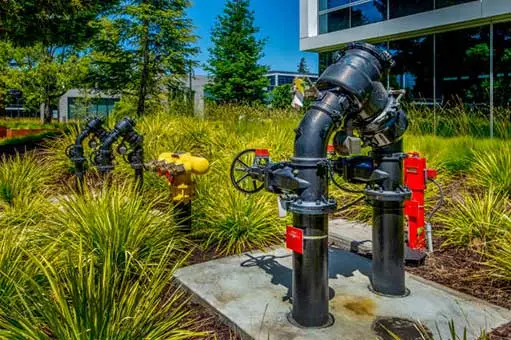
Is your drinking water safe from contamination? Do you know that there are ways that your fresh water supply can become contaminated? Are there measures in place in your home to prevent these issues? Do those measures include a backflow preventer in the house? According to the Legacy Realty & Management team, these are some questions you need to ask about backflow in your plumbing.
This short guide will explain the meaning of backflow, what causes backflow in your plumbing, and how backflow preventers can help prevent this dangerous problem in your home.
What is backflow?
Backflow is a plumbing term that describes the situation where the water in plumbing pipes flows in reverse direction. This reversal of flow happens following sudden and severe drops in water pressure within pipes. It can cause the used water in pipes to mix with the home’s drinking water.
What causes backflow?
The two most common causes of backflow are back siphonage and back pressure.
Back Siphonage
In back siphonage, pressure loss inside the water pipe is caused by pipe damage, ongoing repair works in the network or wrong use of fire hydrants. During back siphonage, water flows backwards into the mains or other parts of the plumbing.
Back Pressure
This happens when high-pressure results in a vacuum in the downstream section of the water line, forcing water to flow in a reverse direction. Back pressure can cause the contents of the non-potable water pipes to flow into the potable water pipes.
There are many dangers and health risks associated with backflow:
Sewage and bacterial contamination of the water supply
When potable and non-potable water is in your plumbing mix, the risk of waterborne diseases becomes very high.
Chemical contamination of drinking water
Backflow can introduce heavy metals and other toxic substances – pesticides and fertilizers – into your home’s water supply.
Increase in allergies and respiratory issues
By introducing allergens and irritants into drinking water, backflow increases the risk of allergies and respiratory problems.
Reproductive health issues
The presence of heavy metals, like lead and mercury, or pesticides in the home’s drinking water can affect reproductive health and fetal development.
Backflow preventers and how they work
Since backflow can happen in a home’s water supply without occupants’ knowledge, it is essential to have measures that automatically prevent backflow. Installing a backflow preventer is the best way of preventing backflow in your home. How does a backflow preventer work?
Backflow preventers use a system of valves and check mechanisms to ensure that water flows only in one direction. Typically, two valves are used to maintain a low-pressure chamber. Water is expelled through the relief valve if the pressure gets too high inside the chamber.
The removal of water through the relief valve normalizes the water pressure inside the pipe. This process is called “purging”. The relief valve used for purging is often installed in an area of the property where there is little risk of water damage.
Most, if not all, backflow preventers work with this method, although there are slight differences in how they apply the underlying principles. There are three major types of backflow preventers, and here is a brief explanation of how each one functions.
Types of backflow preventers
Atmospheric Vacuum Breakers (AVBs)
This uses a simple check valve and air inlet valve. The air inlet is opened to let air into the sealed pipe if water pressure starts to mount in the system. This action breaks the vacuum inside the sealed pipe, preventing back pressure or back siphoning in the pipe. AVBs are suitable for places where the risk of backflow is relatively low.
Pressure Vacuum Breakers (PVBs)
PVBs also have a check valve and air inlet valve but include a high-pressure chamber between the two. Their operation focuses on preventing water pressure spikes on the demand side of the pipe. Double-Check Valve Assembly (DCVA) systems, a different type of backflow preventer work similarly. Both PVBs and DCVAs are best in areas with medium risk of backflow.
Reduced Pressure Zone Assemblies (RPZs)
These come with two check valves (for redundancy) and are the most complex and most effective backflow preventers. They can eject large amounts of water during operation and are often installed in parts of the property where drainage is possible. Because they are so efficient, RPZs are used where the risk of backflow is very high and the potential consequences are severe.
Does your home need a backflow preventer?
If you get your water from a well or use a ground sprinkler system that could introduce chemicals and pathogens into your water supply, the answer is YES.
You also need a backflow preventer if your home is located in one of those states or cities that make the backflow installation preventer mandatory.
Finally, if you have doubts about the quality of your water supply or experience chronic problems with your plumbing, you may want to have the system tested for backflows.


